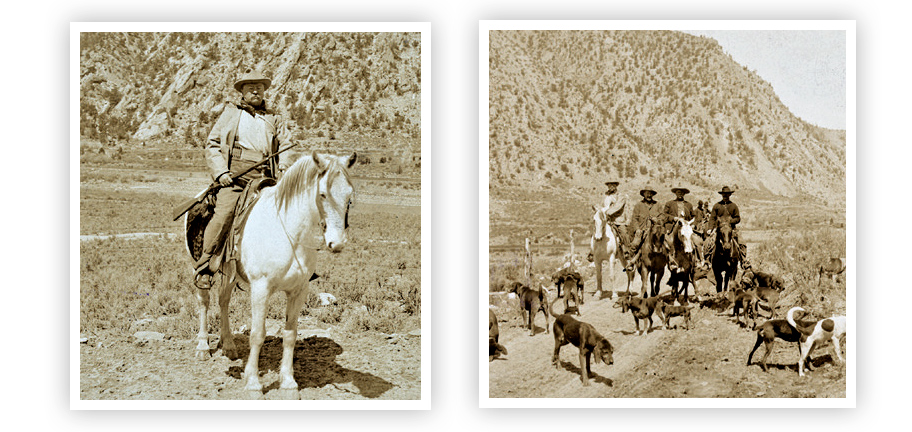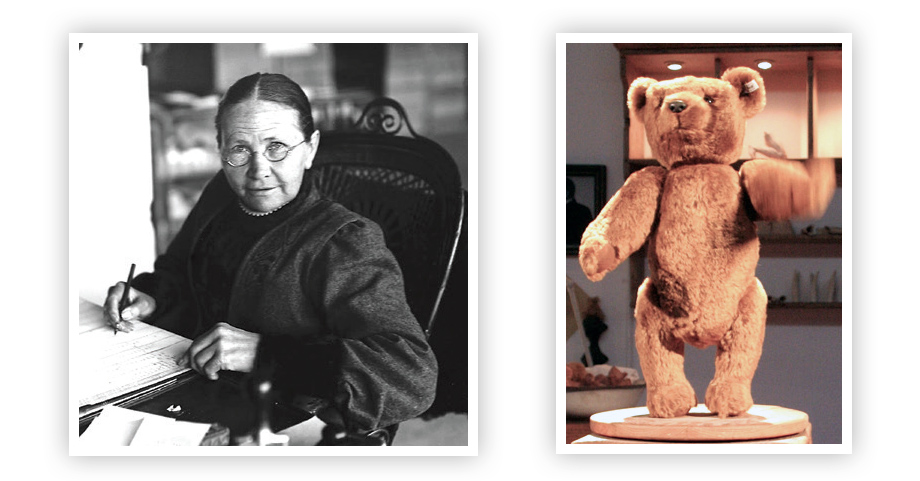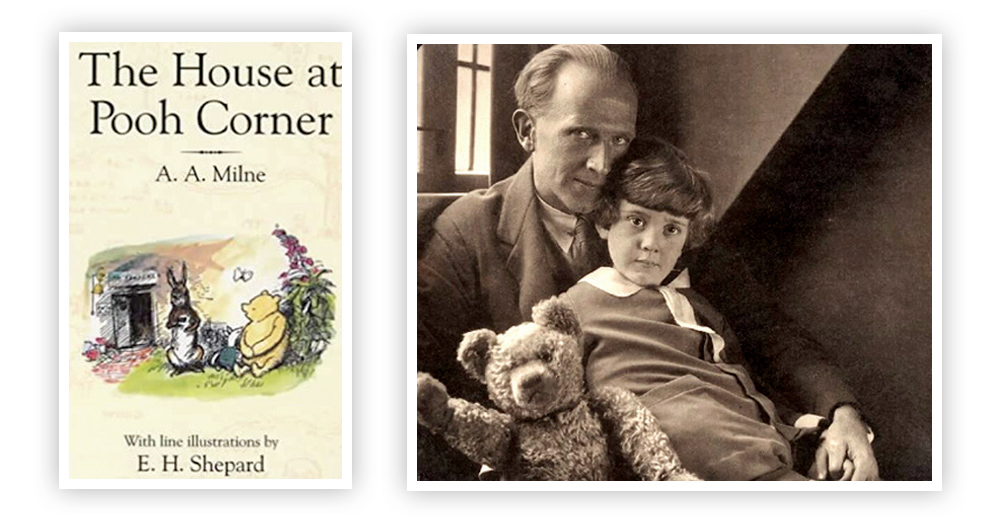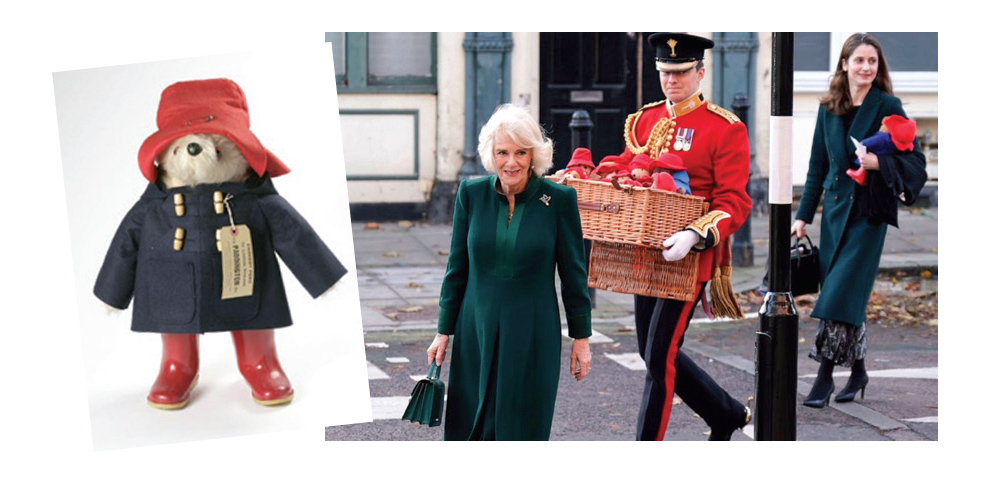
Last year, as the world watched across big screens, a little bear in a red felt hat made havoc of the Queen’s tea table. After a few moments of his antics, Her Late Majesty Queen Elizabeth the Second simply said “never mind.” She, of ancient lineage, indulged what she knew was harmless mischief from one of the most beloved literary bear characters of her time.

In 1902, when it emerged, the story of Teddy’s bear gave the “Rough Rider” president a more sympathetic image, no matter that it was later revealed that the cub had in fact died. Inspired by the story, Washington Post political cartoonist Clifford Berryman produced a cartoon that today we would say “went viral.” The cartoon likely inspired New York store owners Morris and Rose Michtom, and Mrs. Michtom, who produced two stuffed bears for sale in their shop. The Michtom family reportedly asked President Roosevelt permission to call the toy “Teddy’s bear,” and they began selling them nationwide.
While the original story entered National Park Service history, Teddy’s bear was gaining international fame especially in Germany, where the Steiff Company had become one of the world’s most famous toymakers, emerging from the courage and enterprise of a young girl who might otherwise have lived out her life in obscurity.

Margarete Steiff was born in 1847 in Giengen an der Brenz, an ancient town northeast of Ulm in Germany. When she was 18 months old, she was ill with a high fever, after which her legs became paralyzed, and it hurt to use her right arm. Three years later, she was diagnosed with poliomyelitis, and sadly many doctor’s visits and treatments offered no improvement. While her parents despaired about her future, Margarete was always cheerful, and went to school, drawn in a hay cart by her siblings and friends, and carried upstairs to the classroom by a woman living near the school.
In spite of her painful right hand, Margarete went to sewing school and at 17 completed her training as a seamstress. Her older sisters opened a women’s tailor shop in 1862, and Margarete occasionally went to work there. When they moved away after eight years, she carried on alone. Her father built a small tailor shop for her in her parent’s house and with her first earnings she bought herself a sewing machine, which was adapted for left hand use.
In 1877, Margarete opened her own clothing business and soon employed several seamstresses. In the December 1879 fashion magazine “Modernwelt” she saw the pattern for a small stuffed elephant and using the pattern, she fashioned it using felt as a pincushion. But the pincushions, instead, became popular as children’s toys.
Steiff Manufacture was officially founded in 1880, based on sales of the stuffed elephants, which Margarete’s younger brother Fritz took to market. Within six years, over 5,000 elephants had been sold and other stuffed animals that Steiff designed. Fritz built his sister a house with a first-floor apartment adapted for disabled people, a rarity in those days, and an adjacent shop.
In 1892, the first illustrated Steiff catalogue was released featuring the elephants and monkeys, donkeys, horses, camels, pigs, mice, dogs, cats, hares, and giraffes. The catalogue carried Margarete’s motto translated as: “For children, only the best is good enough” and in 1893, the factory was trade registered under her name. The toys were presented at the Leipzig Toy Fair.
In 1902, Richard Steiff, Margarete’s favorite nephew and a designer, created 55PB, the world’s first stuffed jointed toy bears with moveable arms and legs, using a plush mohair fabric. His aunt was skeptical, until an American trader attending the Leipzig Toy Fair ordered 3,000 of them. In 1904, the Steiff brand mark “Button in Ear” was added to distinguish all Steiff toys, and the company was winning prizes at international toy fairs.
From 1906, the bears were an unprecedented success in America under the name of Teddy Bear, to be forever associated with the name of the 26th U.S. president. Margarete died in 1909, a legend. She had founded a world-famous toy company, and courageously overcome disabilities in an era when few women independently owned businesses. For over 140 years, Steiff toys have brought joy to millions of children.

Teddy bear toys were far from the mind of young Canadian Lieutenant Harry Colebourn when his troop train pulled into the small lumber town of White River, Ontario. It was August 24, 1914, 20 days after the Declaration of War against the Kaiser’s Germany. Stepping onto the station platform, Colebourn’s eye was drawn to an unusual sight. A trapper with a 7-month-old black bear cub on a leash was looking for a buyer. The trapper had killed its mother, but did not want to kill the cub.
Colebourn, at 27, was the veterinary officer with the Fort Garry Horse Cavalry regiment and was among the first to enlist in his hometown of Winnipeg. The regiment was traveling to the military training camp at Valcartier, Quebec. His heart went out to the cub, and he scooped it into his arms. He paid the trapper $20 and boarded the train with his new pet, naming him Winnepeg after his hometown. For the weeks that Colebourn trained with the Canadian Expeditionary Force, the cub was his constant companion, sleeping under his cot, following him around, climbing tent poles, and posing for photos with the soldiers. He was now affectionately called “Winnie,” also enjoying training with treats of apples, and a mixture of condensed milk and corn syrup. He became the regiment’s mascot.
In early October, the regiment sailed for England aboard the troopship S.S. Manitou and Winnie went along with Colebourn. During the weeks of training, Winnie grew. Then the regiment was called to the front. Colebourn would serve out the war with the Royal Canadian Army Veterinary Corps tending the wounds and diseases of the Cavalry’s horses.
A short war was expected, and before leaving, Colebourn had placed Winnie in the London Zoo in its new bear habitat. He promised Winnie that he would take him back to Canada. Occasionally on leave, Colebourn visited Winnie at the zoo. But four years later, when the terrible war ended, Winnie had become one of the zoo’s best-known denizens, his gentleness allowing children to play with him. Winnie was happy and Colebourn knew he could not take him home. He now belonged to the people of London, and eventually to the heart of one small boy.
Christopher Robin Milne was born in 1920, the son of an already successful novelist, playwright and poet, A.A. Milne. His son’s happiness playing with his collection of stuffed animals, and his visits at the London Zoo with a black bear he called Winnie-the-Pooh, would bring everlasting fame to the father, his son, and Winnie.
Christopher Robin first visited the zoo with his nanny, but then begged his father to go along. After Milne saw his son feeding spoonsful of condensed milk to this bear, and allowed to enter his enclosure and cuddle him, Milne began his most enduring and endearing writing.
The character Winnie-the-Pooh first came to life in a 1924 book of children’s poetry, “When We Were Very Young,” followed in 1926 by the publication of a full volume of stories “Winnie-the-Pooh.” Two years later there was a sequel, “The House at Pooh Corner.” The toys in Christopher Robin’s nursery; Piglet, Eeyore, Kanga, Roo, and Tigger, with his bear, Edward, which he had renamed Winnie-the-Pooh, came to literary life in the sanctuary of the 100-Acre Wood.
And Winnie? The beloved bear’s death in 1934 made news around the world. Literature gives her a lasting memorial, and two statues. At the London Zoo, and at Winnipeg’s Assiniboine Park Zoo, where she would have lived had she returned to Canada, she is on her hind legs, holding the hands of Lieutenant Colebourn, reminders of the bond between a young Canadian soldier and an orphaned cub, forged in the streams of war.

On Christmas Eve 1956, Michael Bond wandered into a shop near Paddington Station in London. A lone teddy bear on a shelf caught his eye and he bought it for his wife. The bear carried a label, and Bond later said he was reminded of World War II, when Jewish refugee children arriving from Europe, and thousands of London children were evacuated to the countryside, wearing similar labels around their necks and carrying small suitcases. “Please look after this bear. Thank You.”
Within 10 days, Bond had written his first book, and “A Bear Called Paddington” was published in October 1958. Between writing and publication, a change occurred. Bond had originally thought that his bear could come from “Darkest Africa”, but learning that there were no bears in Africa, he decided that Paddington was a spectacled bear from “Darkest Peru,” and as the story line developed, he had been orphaned in an earthquake and taken in by his Aunt Lucy. When she enters a Home for Retired Bears, he apparently stows away. Wearing a duffel coat, old hat, carrying a battered suitcase, and eating his favorite marmalade sandwich, he is found by the Brown family on a bench at Paddington Station.
Paddington is a friendly, mischievous character, getting into scrapes and pratfalls, but he is always polite, and kindly. He is one of the most beloved British fictional characters, with books translated into 30 languages across 70 titles. Television series and films have carried his charm worldwide. When the two sides of the English Channel were linked in 1994, a Paddington Bear soft toy was chosen by the British tunnel builders as the first item to pass to their French counterparts. In several of the films, actor Hugh Bonneville of “Downton Abbey” fame plays Mr. Brown and other well-known actors are thrilled to be chosen to voice over for Paddington’s family and friends.
It is unclear how the late Queen’s teatime meeting with Paddington came about. No one seemed to know, even her family was surprised he was part of her Platinum Jubilee celebrations. But of all the pageantry and events that Jubilee Weekend, none was more remembered than her tea with Paddington Bear. After the Queen died three months later, there was a new phenomenon in tributes outside the Royal residences. Among the masses of flowers brought to the Royal Residences’ gates were over a thousand Paddington and other bears, some with marmalade sandwiches, and many with loving messages attached for the late Queen. The donors of the Paddington bears, often children who had given up their toys, learned that their gifts had touched the Royal Family beyond measure. The bears would become a gift that goes on giving.
Dr. Thomas John Barnado founded his charity, Barnado’s, 150 years ago to run orphanages. Now Barnado’s, the charity focuses on foster care and adoptions. In 1988, Queen Elizabeth became its Patron, but in 1916, she handed it over to the Duchess of Cornwall, now the Queen Consort Camilla. She has spearheaded the collection of all the bears, to be cleaned and prepared for their new homes with Barnado’s children. Last November 24, 2022, she traveled to Barnado’s Nursery in East London accompanied by Hugh Bonneville and Madeleine Harris. With the under 5-year-olds they enjoyed a teddy bear’s tea party, handed out the toy bears, including Paddington, as Bonneville and Harris read some of the stories. The rest of all the collected bears were distributed to children in need across the United Kingdom.
Teddy bear has become a generic term for most toy bears, those cuddly and comforting friends of early childhood. Winnie-the-Pooh with his friends in the 100-Acre Wood are universal favorites through the Disney franchise of films, cartoons, and books. And now Paddington Bear, that gentle, sometimes clumsy, and always good-hearted spectacled bear from “Darkest Peru,” is a treasured part of British history.
. . . . . . . . .
Barbara L. Benson grew up in Kent, England, and later moved to New York. She settled in Barrington and has walked with our history since she first arrived here in 1980.
Share this Story